Darjeeling
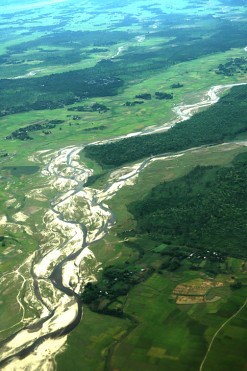
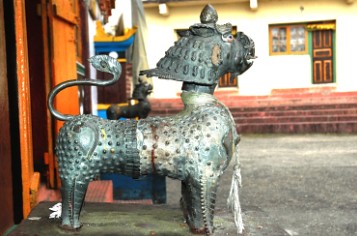
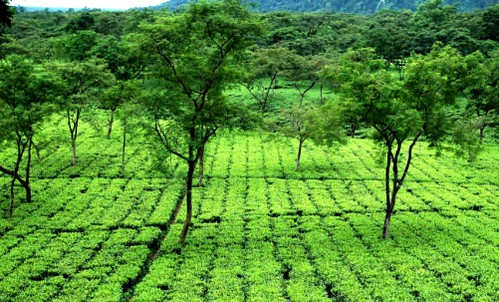
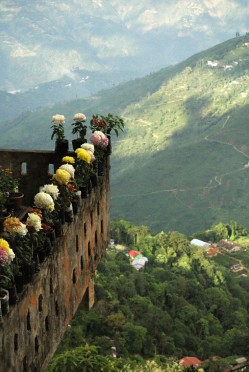

It seems that only just scant minutes after moving out of the hot, humid typical north-Indian-plains-town of Siliguri one is greeted by a new landscape: tea gardens, cool streams hurling themsleves out of foggy hillsides, the vegetation changing to firs, pines and ferns. The Queen of the Hills, laid out by the Royal Engineers at an altitude of 2,134 m (7,000 ft), is now a rather decrepit dowager, and it is easy to forget her origins as a Shangri-la in the early years of the 19th century, when she was part of the domain of Sikkim and ravaged frequently by the Gorkhas of Nepal. In 1780, the Gorkha tribes marched into Sikkim, annexed the lower Terai slopes, and advancing to the Teesta and Mahananda rivers, inadvertently trod on the toes of a new waxing power in Bengal, the East India Company. In 1814 a war was fought between the Company and Nepal, the tract ceded, and the Raja of Sikkim reinstated by the Company Bahadur. Sikkim, then including Darjeeling, became a buffer state between Nepal and Bhutan.
Several years later, the then British Commercial Resident at Malta, on a trip to India, set out through the Terai mountain regions, and, reaching the old Gorkha station of Darjeeling, stayed here for six days in 1829. The Resident Grant observed the strategic position of this little spur jutting out to the north, commanding the entrances into Nepal and Bhutan; the weather was a welcome change to the heat of the Delta; and the thought of saving the souls of all the idolatrous Hindoos and Boodists was an added attraction. So the company officials were asked to open negotiations with the Sikkim ruler for the cession of the Terai as soon as a convenient occasion could be engineered:
The Governor- General having expressed his desire for the possession of the hill of Darjeeling on account of its cool climate
I the said, Sikkimputtee Rajah, out of friendship for the said Governor-General, hereby present Darjeeling to The East India Company, that is, all the land South of the Great Ranjeet River, East of the Balsum, Khail and Little Ranjeet Rivers and West of Rungno and Mahanuddi Rivers.
Dated The 9th Maugh, Sambat 1891 AD, 1835
The king of Sikkim was granted an annual allowance of Rs. 3000 by way of compensation for what was then a virtually uninhabited tract of land. There were about 20 mud huts around the Mahakal temple, and the population was scarcely 100.

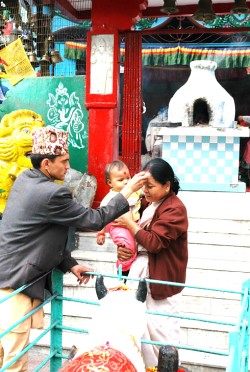
The tea industry was introduced in 1841, after the hill tribes had introduced the stimulant to the British in Assam and North Bengal. Twenty-five years later, there were already 40 gardens covering 10,000 acres with an output of quarter million kilos. In 1849 the Pankahbari route took shape. Immigrants poured in and the Hill Cart road was also laid out. The journey then took a fortnight was negotiated by boat, palanquin and pony; it cost; in the 1870s, it took three hundred rupees to travel the 663 km (412 miles) from Calcutta.
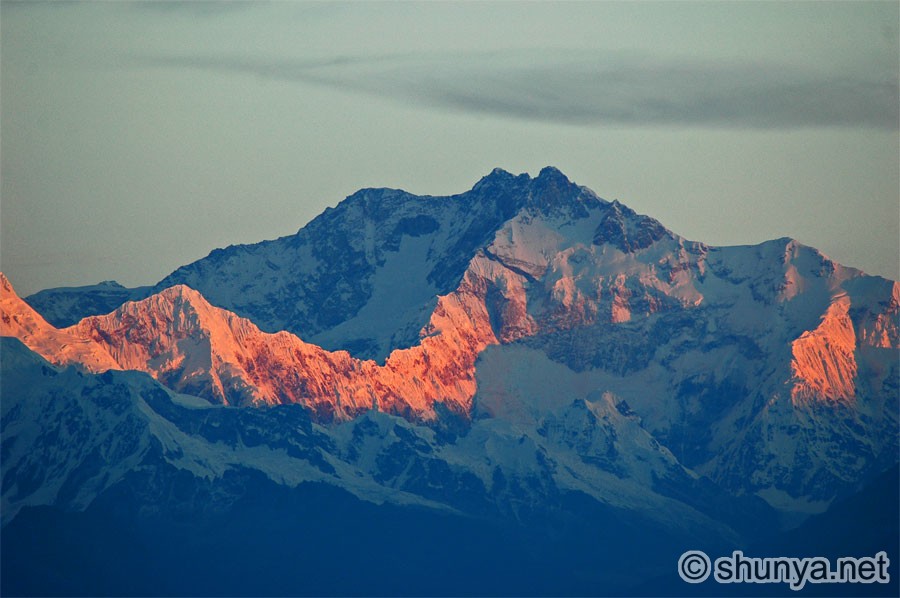
(Kanchenjungha photo courtesy of Shunya, visit
http://www.shunya.net/Pictures/Himalayas/Darjeeling/Darjeeling.htm for more.)


1 Comments:
Cool stuff. Using some of your material, hope that's ok.
Post a Comment
<< Home